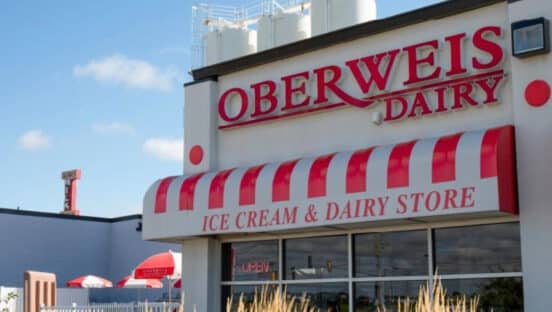Consumer demand, product availability, and reliable transportation plague the foodservice industry on a daily basis. With more than 20 percent of the U.S. relying on quick- and full-service restaurants to fill and fuel their bodies each week, each element of the food supply chain must establish explicit procedures in preparation for common obstacles. McDonald’s, the top-earning quick-service establishment in the U.S., counts on multiple facets to ensure the Big Mac’s seven core ingredients are readily available when an order is placed. But what happens when inventory isn’t available, or, on a much larger scale, a global pandemic breaks the supply chain? That’s where risk mitigation comes into play.
Risk mitigation is defined as the technique of assessing, minimizing, and preventing accidental loss to a business through the use of insurance, safety measures and relevant applications. Supply chain disruptions are hard to predict (i.e. natural disasters, war, transportation delay). Food and beverage manufacturers and retailers depend on well-thought risk mitigation strategies in the event an element of the “chain” breaks or becomes loose. In the foodservice industry, this can appear in the form of order delays, unexpected price change, environmental factors or inefficient distribution, to name a few. With risk mitigation, however, manufacturers and retailers can respond quickly with little to no disturbance to the end consumer.
At the end of the day, it’s essential to understand potential risk in the foodservice industry and how to handle it accordingly.
Automation Aids in the Delivery of Fresh Product
Quick- and full-service restaurants rely on their supply chain partners to deliver fresh products. Subsequently, food manufacturers rely on their warehouse employees to evaluate product, discarding inedible items when necessary. When product is delivered rotten and/or contaminated, human error is often to blame, citing poor inspection practice or overall neglect. With proper risk management, however, food manufacturers can rest assured that product leaving the warehouse is consumable, and restaurants remain confident in their suppliers.
To prevent poor product quality, risk management can emerge in several ways, including the implementation of proper software and automation. The implementation of an advanced warehouse management system, including internet networks, RFID tracking and robotics, much like automated visual inspection (AVI), can provide a foolproof system in detecting and discarding defective items, as well as getting the right product to the right customer at the right time. At the same time, software and automation can cut overall costs and enhance warehouse productivity and efficiency. With less chance for human error, overall product quality and end customer satisfaction increases.
Data Provides View Into Customer Demand
Some trends remain year over year. Hamburgers and hot dogs gain popularity around Independence Day and turkey breast and cranberry sauce are hot commodities in November. Data provided by a warehouse management system yields supply chain visibility in the production of goods year to year. Without an adequate warehouse management system in place, the shelves would be bare of hot dogs, ground beef and turkeys when desired most.
Data, however, does more than assess demand and fill shelves. It provides a realistic view of the inherent risks of the industry, including product shortages, incorrect shipments and late fees or deliveries. In order to create a transparent supply chain, companies must establish an intelligent data strategy. By surfacing and analyzing action insights from available data, companies can save time, money and improve overall supply chain performance. With the right platform, supply chain insights and visibility can be achieved and product fulfilled, on time and during the consumer-preferred season.
Responding to the Unpredictable
Specialty menus, out-of-season demand and food-related trends can throw the food supply chain for a loop. Some trends, however, come from a mass need that data will account for in the near future. The pandemic, for example, introduced a demand for family-sized meal kits and a 66 percent increase in meals cooked at home. As retailers and manufacturers pivot to meet the current demand, the data can be analyzed, stored, and used if and when a similar situation occurs again. Unlike the empty shelves of the past year, suppliers can react and begin production much quicker.
Similarly, yet less predictable, natural disasters rock the food supply chain annually. To sustain, suppliers, manufacturers and retailers must adhere to a risk mitigation plan that doesn’t necessarily coincide with data or automation. This often comes in the form of identifying early climate trends, obtaining backup contracts with additional suppliers in the event crops are damaged and stockpiling vital ingredients when possible.
Quick- and full-service restaurants account for nearly 50 percent of the foodservice industry spend in the U.S. To continue meeting supply and demand, suppliers, retailers and manufacturers must adhere to individual risk mitigation strategies. With a plan in place, action can be taken quickly and end-to-end supply chain visibility can be achieved.
Steve Shebuski is the Vice President of Digital Transformation at Blue Horseshoe. Steve has 20-plus years of experience as a Program Manager/Design Lead/Project Manager implementing Microsoft Dynamics 365 as well as tier I and tier II warehouse management and transportation software solutions. Steve’s deep knowledge within the distribution industry and his innovative approach to solution architecture are the backbone of the solutions implemented and deployed by Blue Horseshoe.













